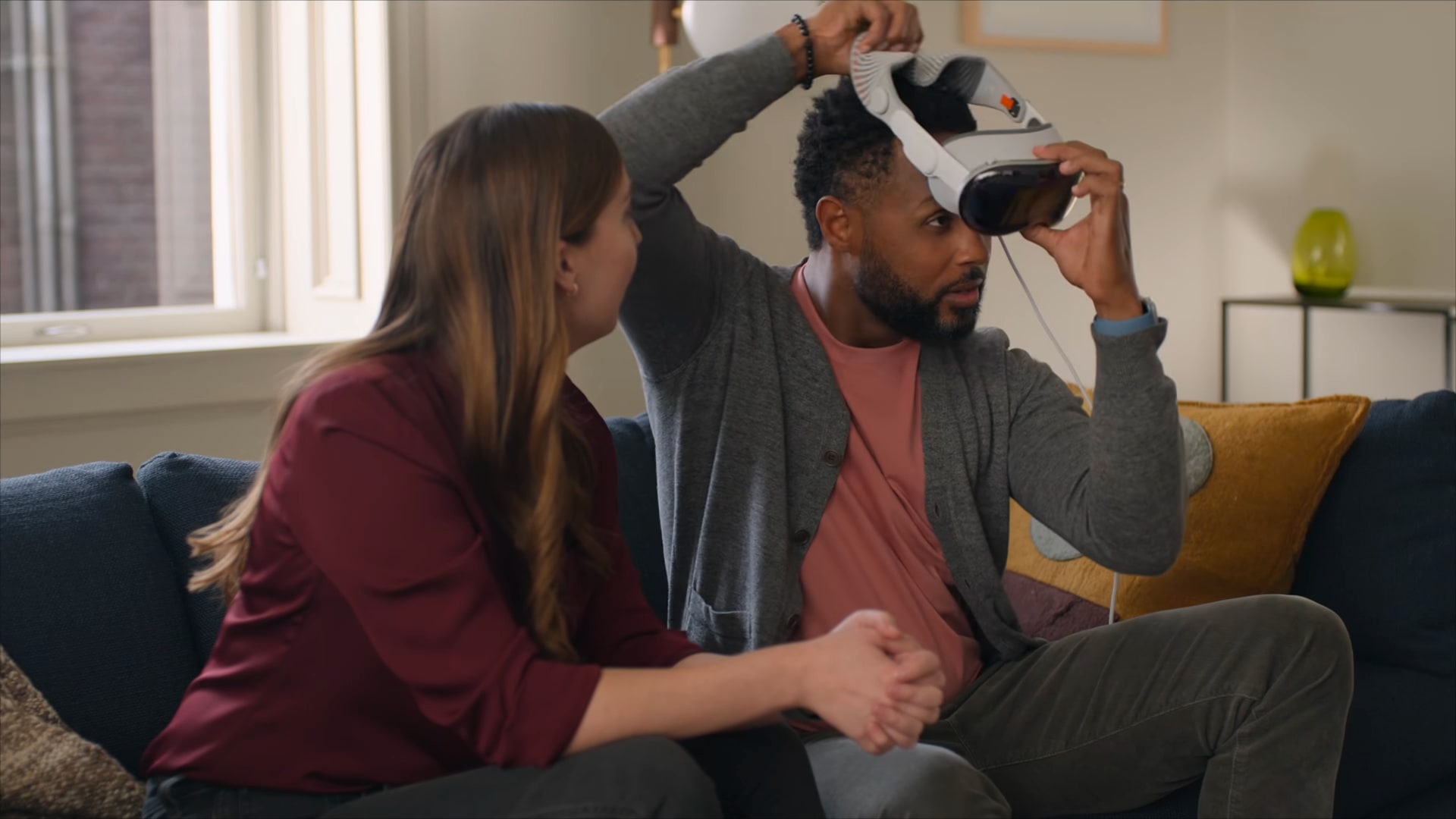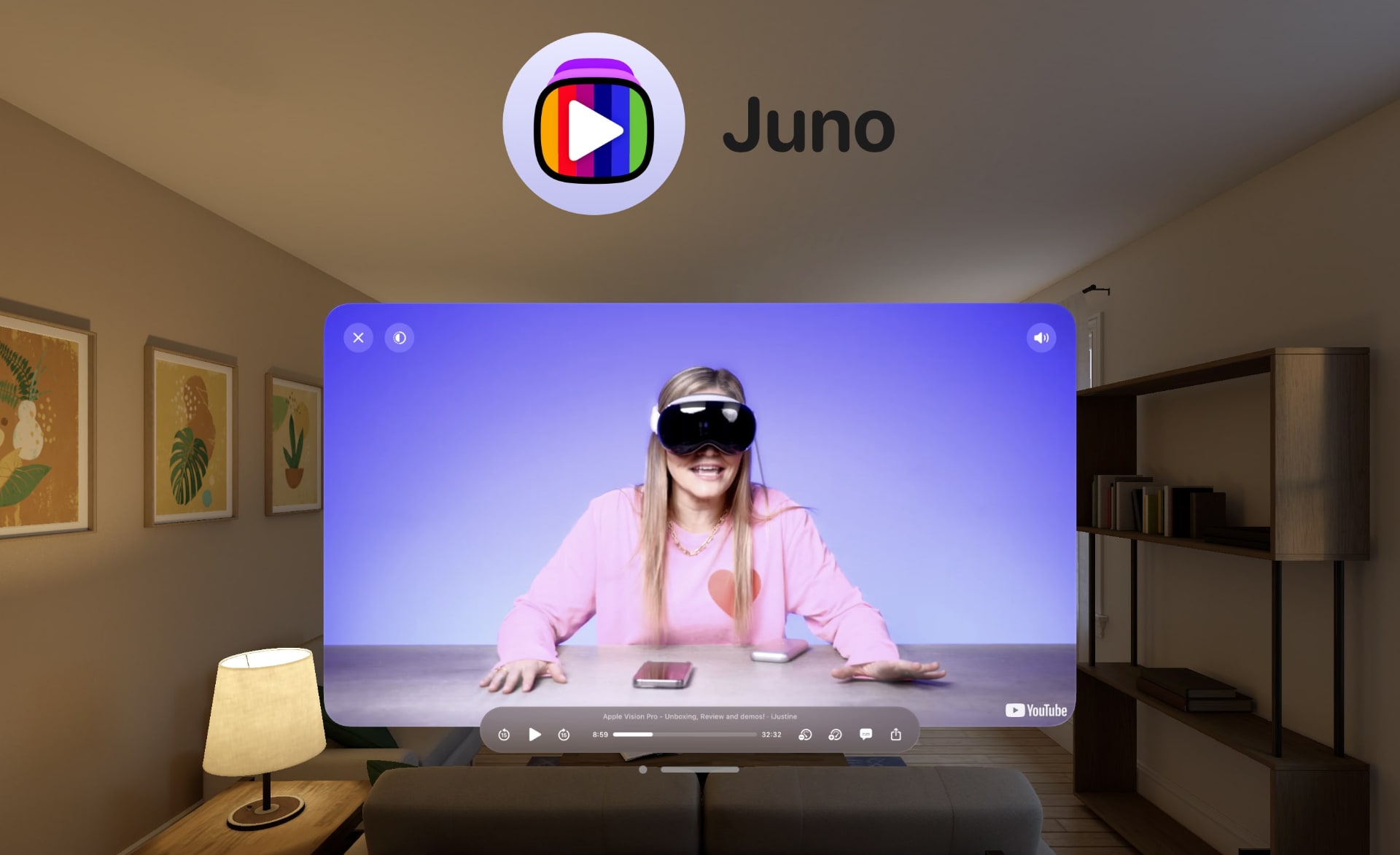Google has chosen to see how the whole spatial computing thing plays out before committing to developing a native YouTube app for Apple’s Vision Pro headset.

“We’re excited to see Vision Pro launch and we’re supporting it by ensuring YouTube users have a great experience in Safari,” Google said in a statement to The Verge.
“We do not have any specific plans to share at this time,” the company continued, adding it can “confirm that a Vision Pro app is on our roadmap.”
Google may release a YouTube app for Vision Pro after all
The statement’s wording suggests that the search giant might provide a native YouTube app for Vision Pro at some point, but that day is not today. Also, calling the YouTube experience in Safari on Vision Pro “great” is, uhm, a stretch.
The experience is clunky, to say the least. You must launch Safari from the Home Screen, look at the URL field and use dictation to spell out the youtube.com address.
Once there, navigating the site is challenging compared to changing sections and choosing content in native video apps for Vision Pro such as Disney+.
On top of that, 360-degree videos and stereoscopic 3D videos are only available in the official app and can’t be accessed via youtube.com.
Safari’s WebXR support is lacking right now
That’s because Safari doesn’t support WebXR, new APIs web apps use to access AR and VR features on headsets like the Oculus series, Google Cardboard, etc.
The good news is that Apple has confirmed it’s working on adding WebXR support to Safari but that won’t necessarily unlock YouTube’s 360 and 3D videos on Vision Pro.
That’s because WebXR currently doesn’t allow web apps to take full advantage of “the power, performance and interaction capabilities of Apple Vision Pro and visionOS.” This may change down the road as Apple is a contributor to WebXR.
“We’ve been actively contributing to the W3C web standards, including WebXR—for example, proposing interaction standards that protect users’ privacy,” the Cupertino company told The Verge. “We will continue to work with the community to help deliver great spatial computing experiences via the web.”
How to enable WebXR support in Safari on visionOS
If you’re feeling adventurous, you can enable experimental WebXR support in Safari on visionOS (developer Professor Michael Gold has shared the steps on X):
- Launch the Settings app.
- Select Apps > Safari.
- Scroll to the bottom of the page and choose Advanced.
- On the next screen, scroll to the bottom and choose the Feature Flags option, then turn on the WebXR Device API and WebXR Hand Input Module options underneath Experimental XR Features.
- Turn on the WebXR Augmented Reality Module and WebXR GamePads Module options under WebKit Feature Flags.
You can now exit the Settings app, switch back to Safari and visit a website that uses WebXR to deliver AR and VR experiences in a browser.
How to enable WebXR on Vision Pro pic.twitter.com/knE3oca9rD
— Michael Gold (@michaelgold) February 3, 2024
If a WebXR-enabled page previously displayed an error message, it might now work unless it requires a dedicated AR/VR controller or gamepad. Again, enabling the above feature flags won’t let you watch YouTube’s 360 and 3D videos on Vision Pro.
Meanwhile, use Juno to watch YouTube on Vision Pro
The only YouTube alternative to Safari on visionOS is Juno, an unofficial YouTube Vision Pro app from Apollo for Reddit developer Christian Selig. Although Juno works well, not all features are supported, and you cannot watch 360 and 3D videos.

iPad apps lack immersive features that only native apps can deliver, so Google’s decision is understandable even if you wholeheartedly disagree with it.
Google will bring YouTube to Vision Pro, eventually
Committing to a whole new platform is a big ask for a major developer. You have to take a long-term view where creating a native app is but one piece of the puzzle.

Once your app is out there, your job is far from done. You need to maintain the app with regular updates and implement new platform features that Apple will inevitably add to visionOS over time. And of all major developers, Google is notorious for taking years to support the latest Apple platform features in its apps.
Another major factor contributing to Google’s decision is the fact that no one has tried selling a face computer for $3500. Vision Pro’s success is far from guaranteed, and it’s not clear there’s a viable market for this product that could sustain itself.
With all said and done, I’m not surprised that Google has chosen to sit on the sidelines and see how the whole spatial computing thing plays out.